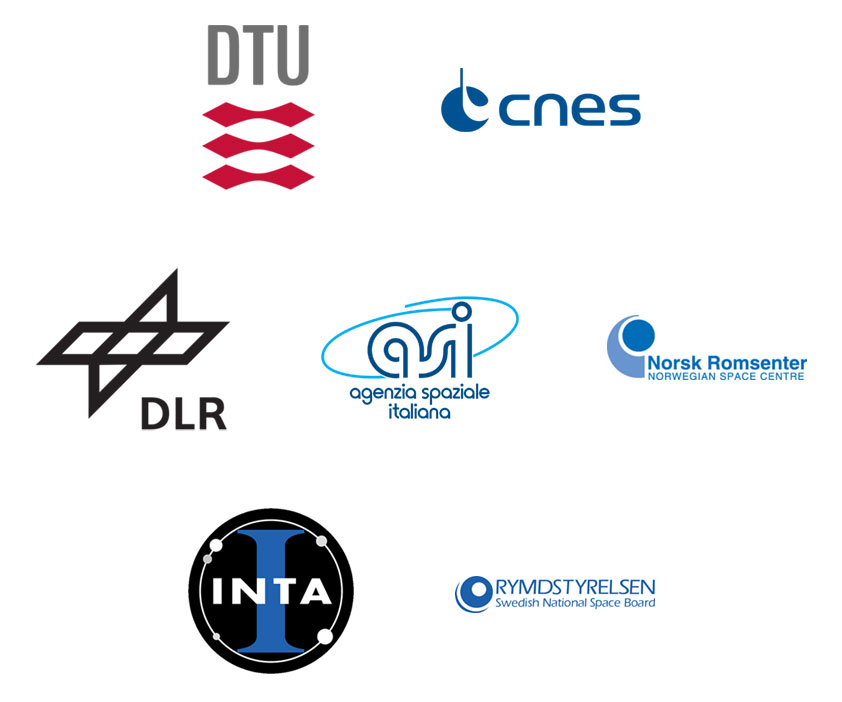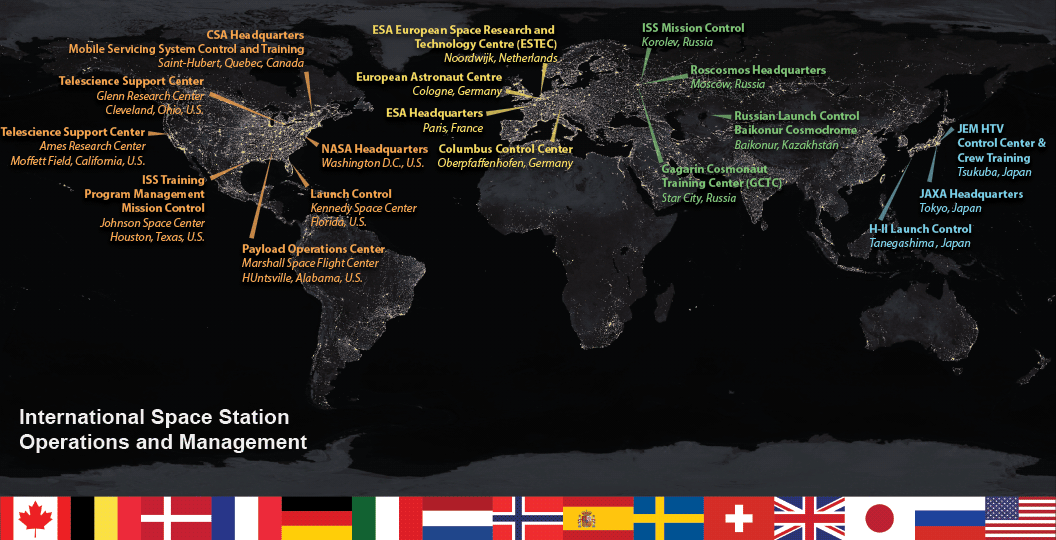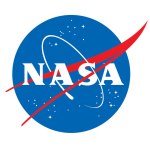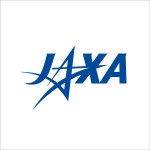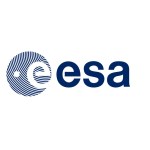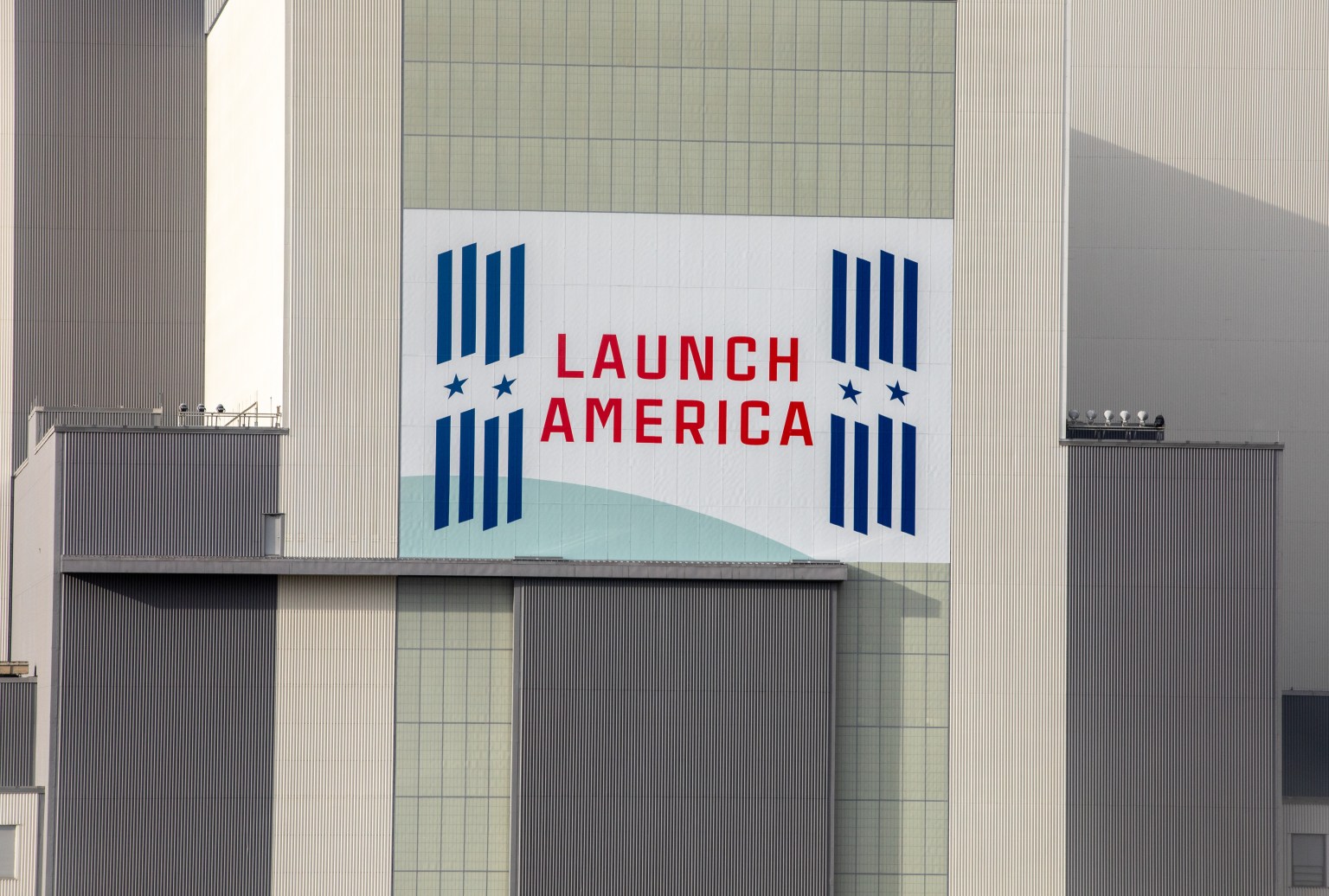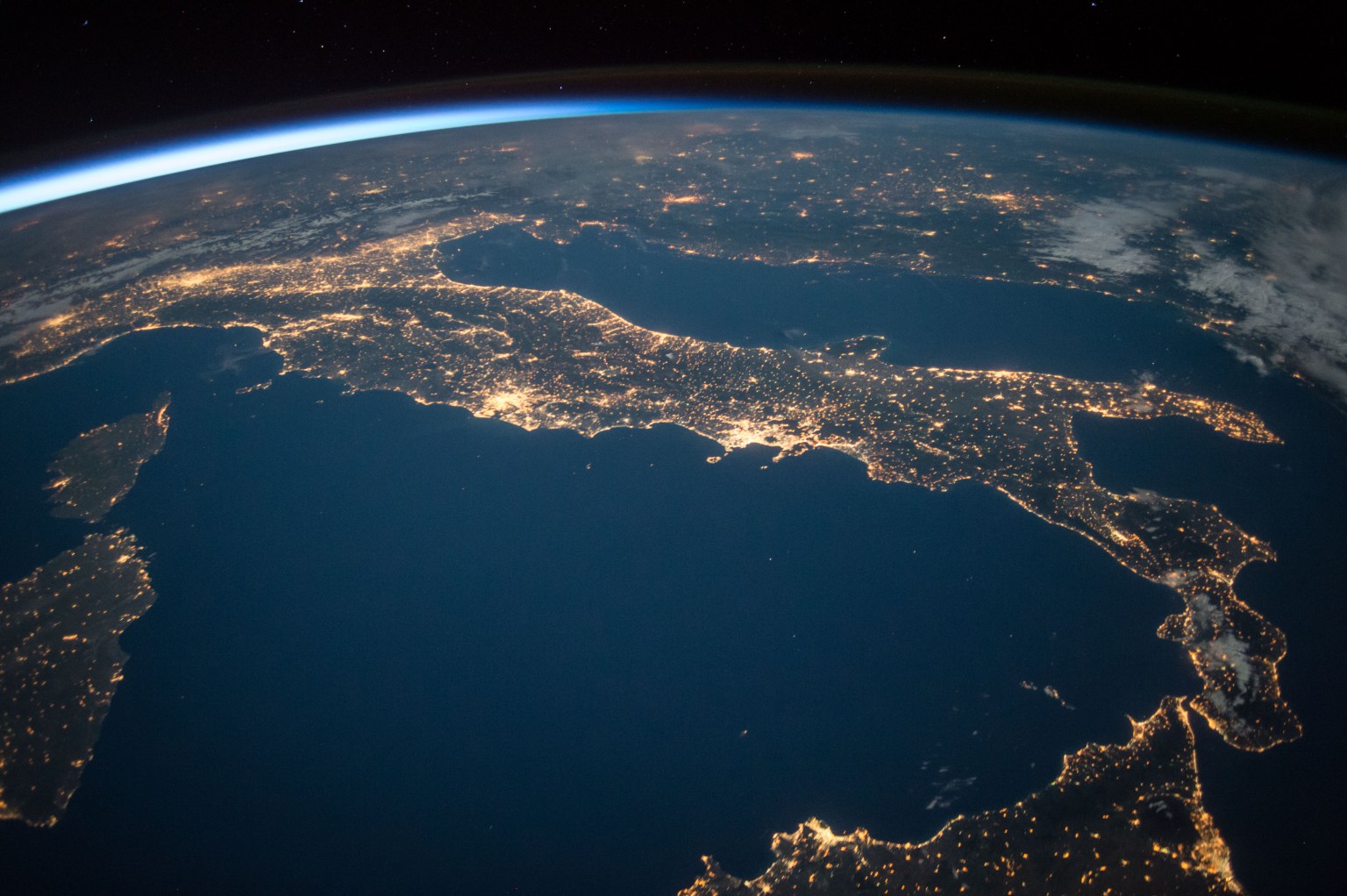
International Cooperation
TODAY
International Space Agencies
Countries
The International Space Station (ISS) Program’s greatest accomplishment is as much a human achievement as it is a technological one—how best to plan, coordinate, and monitor the varied activities of the Program’s many organizations.
An international partnership of space agencies provides and operates the elements of the ISS. The principals are the space agencies of the United States, Russia, Europe, Japan, and Canada. The ISS has been the most politically complex space exploration program ever undertaken.
A Global Effort
The International Space Station Program brings together international flight crews, multiple launch vehicles, globally distributed launch, operations, training, engineering, and development facilities; communications networks, and the international scientific research community.
Elements launched from different countries and continents are not mated together until they reach orbit, and some elements that have been launched later in the assembly sequence were not yet built when the first elements were placed in orbit.
Operating the space station is even more complicated than other space flight endeavors because it is an international program. Each partner has the primary responsibility to manage and run the hardware it provides.
Construction, assembly and operation of the International Space Station requires the support of facilities on the Earth managed by all of the international partner agencies and countries involved in the program.
These include construction facilities, launch support and processing facilities, mission operations support facilities, research and technology development facilities and communications facilities.
International Partners and Participants
Launched in 1998 and involving the U.S., Russia, Canada, Japan, and the participating countries of the European Space Agency—the International Space Station is one of the most ambitious international collaborations ever attempted. The largest space station ever constructed, the ISS continues to be assembled in orbit. It has been visited by astronauts from 18 countries—and counting.
ESA Country Members
